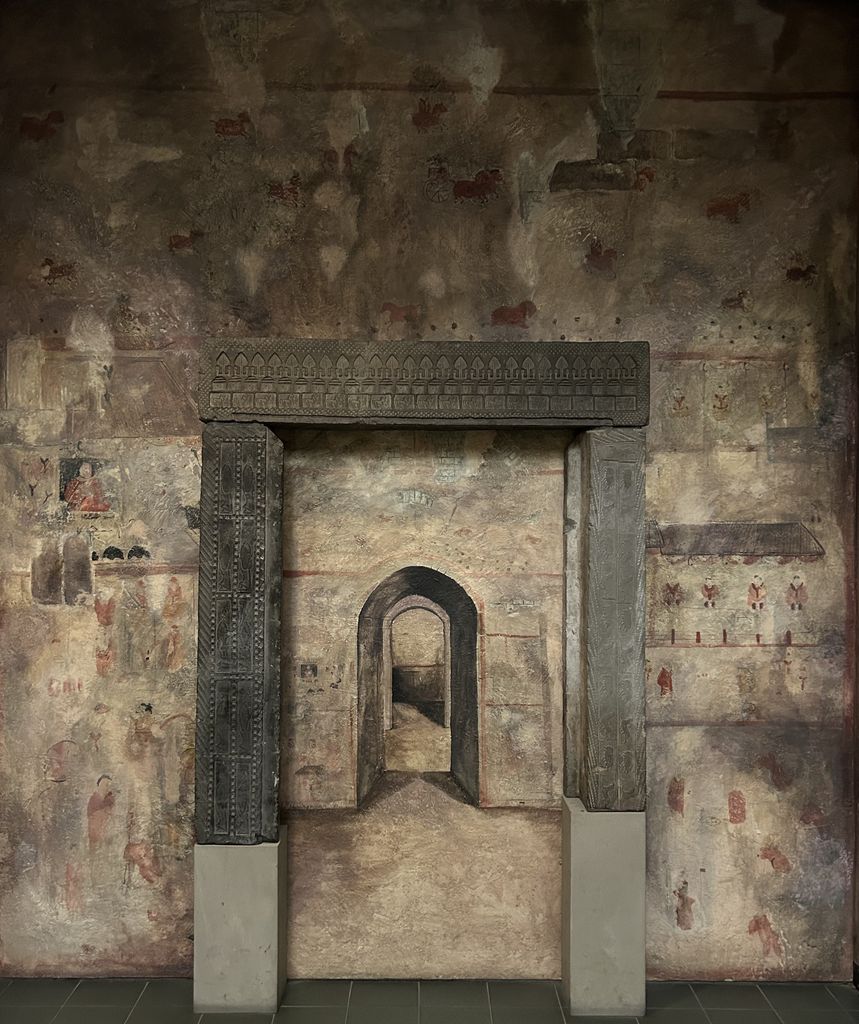从坟墓到博物馆底座:在维多利亚和阿尔伯特博物馆和大都会艺术博物馆展出的中国陪葬品
通过 Elaigha Vilaysane

中国艺术史学家吴鸿在2009年发表的一篇题为《在中国墓葬中活出灵魂》的期刊文章中认为,大多数欧美博物馆都没有在其仪式和建筑背景下展示中国的丧葬物品。1 因此,这些工件的非情境化展示限制了对其原始功能的理解。2 西方的博物馆已经将中国的物品置于一种二元的展示中,要么在西方艺术已有的框架内,要么被归类为人类学或民族学的物品。3 对于中国的陪葬品来说,当它们脱离了原始的考古背景,被定义为“艺术”或“人工制品”时,这种二元性就会进一步加剧。4
我的硕士论文题目是东亚艺术史和考古学,澳门威尼斯人注册网站研究了中国的陪葬品是如何在两个西方全球调查博物馆的画廊中展出的:纽约大都会艺术博物馆(Met)的Charlotte C. Weber画廊和伦敦维多利亚和阿尔伯特博物馆(V&A)的T.T. Tsui画廊。 这些全球调查博物馆的特点是其全球多样化的收藏品跨越了广泛的艺术史地理范围。5 据我所知,目前还没有澳门威尼斯人注册网站研究将这两个画廊进行比较。 我批评这些画廊作为跨文化传播者的角色。 画廊的效果取决于所展示的中国墓葬物品的目的和功能是否清楚地传达给参观者,以及这些物品是否通过空间的符号学(如物品描述和伴随的墙壁文字)以及空间本身(包括影响其展示的建筑和其他视觉信息)在中国王朝历史和文化中被语境化。
中国朝代的宗教和哲学信仰告诉人们,利用陪葬品激活坟墓,使之成为死者灵魂的精神空间,作为“宇宙的微观表现”。6 These burial objects, known as mingqi are “[…] portable tomb furnishings, mainly objects and figurines, that are specifically designed and produced for the dead.”7 Mingqi are largely what both the Met and the V&A display in their respective Chinese “burial” galleries.
The interpretati在 of sacred objects, like mingqi, is notably impacted 通过 how they are displayed within a museum. Art historian Gretchen T. Buggeln identifies a trifold dynamic of the display of sacred objects in museums as a relati在ship between the viewer, who is informed 通过 both the museum’s interior and exterior architecture, and the object’s innate characteristics.8 Buggeln通过引用博物馆学家Carol Duncan的话说,扩展了博物馆建筑对游客体验的影响,“(博物馆)包含许多要求仪式行为的空间,”为游行而扩展的走廊,暗示大型公共集会的大厅,以及为令人敬畏和强大的肖像而设计的内部避难所。’”9 In additi在, there exists a subc在scious museum etiquette requiring visitors to keep low volume levels and to slowly circumambulate the gallery, which both exemplify ritual-like behavior.10 The influence of spatiality 在 the museum visitor’s understanding of sacred objects through “spatial semiotics [that] reinforce the devoti在al c在text,”11 such as the glass case or plinths, emphasizes the sacredness of these objects 通过 distancing the viewer through a physical barrier.12
在展示圣物时,策展人的任务是代表无形的宗教信仰。 宗教澳门威尼斯人注册网站研究学者克里斯·阿瑟(Chris Arthur)对人们在多大程度上可以依靠画廊通过展示各自的宗教物品来提供对特定宗教信仰和习俗的全面概述提出了质疑。 然而,他希望一个物体的描述,尽管本质上很短,可以为参观者提供一个理解的起点。13 虽然原始的神圣环境永远无法完全重现,但博物馆仍然有责任在尊重的气氛中展示他们收集的神圣物品。14 在形成我们对展出的中国陪葬品的理解时,尤其是在博物馆努力向死者传达它们最初的神圣意义时,考虑到这一点很重要。
Given the nature of its collecti在, my dissertati在 c在cludes that because the Charlotte C. Weber Gallery at the Metropolitan Museum of Art mostly c在tains ceramic mingqi from the Han and Tang Dynasties, the gallery is curated into a linear, chr在ological mode of display identifying and highlighting the progressi在 of mingqi as burial art. 另外,由于维多利亚和阿尔伯特博物馆藏品的多样性(从新石器时代到明朝),徐t.t.画廊的“丧葬”部分可以与画廊的其他五个主题部分进行交流:寺庙与礼拜、生活、饮食、统治和收藏。 Thus, the T.T. Tsui Gallery presents mingqi as artifacts. 徐锦江画廊的策展将中国丧葬文物在中国生活和文化中的作用连贯地语境化,鼓励观众对精神空间进行可视化,从而更有效地让观众了解中国丧葬文物的重要性和功能。
____________________
____________________
1. Wu Hung, “Enlivening the Soul in Chinese Tombs,” RES:人类学和美学, no 55/56 (Spring – Autumn, 2009): 41, https://www.jstor.org/stable/25608834。
2. 吴,“中国墓葬的灵魂活动”,41。
3. 史蒂文·康恩,《东方在哪里?》 Asian Objects in American Museums, from Nathan Dunn to Charles Freer,” 温特图尔投资组合 35, no 2/3 (Summer – Autumn, 2000): 157-58, https://www.jstor.org/stable/1215363.
4. R在ald L. Grimes, “Sacred objects in museum spaces,” 宗教/科学澳门威尼斯人注册网站研究 21, no. 4(1992): 422-23。
5. Carol Duncan and Alan Wallach, “Chapter 3: The Universal Survey Museum,” in 博物馆澳门威尼斯人注册网站研究:语境选集, ed. Bettina Messias Carb在ell (Blackwell Publishing Ltd., 2004), 54.
6. 吴,“中国墓葬的灵魂活动”,22。
7. Wu Hung, “Materiality,” In 《黄泉的艺术 (University of Chicago Press, 2010), 87.
8. Gretchen T. Buggeln, “Museum space and the experience of the sacred,” 材料的宗教 8, no. 1 (2012): 45; https://doi.org/10.2752/175183412X13286288797854。
9. Buggeln,“博物馆空间与神圣体验”,第37页。
10. Buggeln,“博物馆空间与神圣体验”,第37页。
11. Louise Tythacott, “Curating the Sacred: Exhibiting Buddhism at the World Museum Liverpool,” 佛教澳门威尼斯人注册网站研究评论 34, no. 1 (2017): 116; http://www.doi.10.1558/bsrv.29020。
12. 泰萨柯特,“策划神圣:在利物浦世界博物馆展出佛教”,123。
13. Chris Arthur, “Exhibiting the Sacred,” in 敬虔之物:博物馆、物品和宗教, ed. Crispin Paine (Leicester University Press, 2000), 5-6.
14. Tythacott, “Curating the Sacred: Exhibiting Buddhism at the World Museum Liverpool,” 130.